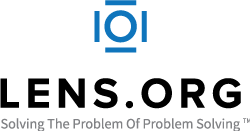
The World Intellectual Property Organization is one of the 15 specialized agencies of the United Nations (UN). Pursuant to the 1967 Convention Establishing the World Intellectual Property Organization, WIPO was created to promote and protect intellectual property (IP) across the world by cooperating with countries as well as international organizations. It began operations on 26 April 1970 when the convention entered into force. The current Director General is Singaporean Daren Tang, former head of the Intellectual Property Office of Singapore, who began his term on 1 October 2020.
Business intelligence (BI) comprises the strategies and technologies used by enterprises for the data analysis and management of business information. Common functions of business intelligence technologies include reporting, online analytical processing, analytics, dashboard development, data mining, process mining, complex event processing, business performance management, benchmarking, text mining, predictive analytics, and prescriptive analytics.
Technology transfer (TT), also called transfer of technology (TOT), is the process of transferring (disseminating) technology from the person or organization that owns or holds it to another person or organization, in an attempt to transform inventions and scientific outcomes into new products and services that benefit society. Technology transfer is closely related to knowledge transfer.
Prior art is a concept in patent law used to determine the patentability of an invention, in particular whether an invention meets the novelty and the inventive step or non-obviousness criteria for patentability. In most systems of patent law, prior art is generally defined as anything that is made available, or disclosed, to the public that might be relevant to a patent's claim before the effective filing date of a patent application for an invention. However, notable differences exist in how prior art is specifically defined under different national, regional, and international patent systems.

Cambia is an Australian-based global non-profit social enterprise focusing on open science, biology, innovation system reform and intellectual property. Its projects include The Lens, formerly known as Patent Lens, and the Biological Innovation for Open Society Initiative.
Web analytics is the measurement, collection, analysis, and reporting of web data to understand and optimize web usage. Web analytics is not just a process for measuring web traffic but can be used as a tool for business and market research and assess and improve website effectiveness. Web analytics applications can also help companies measure the results of traditional print or broadcast advertising campaigns. It can be used to estimate how traffic to a website changes after launching a new advertising campaign. Web analytics provides information about the number of visitors to a website and the number of page views, or create user behavior profiles. It helps gauge traffic and popularity trends, which is useful for market research.

In business computer information systems, a dashboard is a type of graphical user interface which often provides at-a-glance views of key performance indicators (KPIs) relevant to a particular objective or business process. In other usage, "dashboard" is another name for "progress report" or "report" and considered a form of data visualization. In providing this overview, business owners can save time and improve their decision making by utilizing dashboards.
The completion of the human genome sequencing in the early 2000s was a turning point in genomics research. Scientists have conducted series of research into the activities of genes and the genome as a whole. The human genome contains around 3 billion base pairs nucleotide, and the huge quantity of data created necessitates the development of an accessible tool to explore and interpret this information in order to investigate the genetic basis of disease, evolution, and biological processes. The field of genomics has continued to grow, with new sequencing technologies and computational tool making it easier to study the genome.

Google Patents is a search engine from Google that indexes patents and patent applications.

The Lens, formerly called Patent Lens, is an online patent and scholarly literature search facility, provided by Cambia, an Australia-based non-profit organization. The Lens has been hailed as the “most comprehensive scholarly literature database, that exceeds in its width and depth two leading commercial databases combined”. The Lens is an agglomeration database, that takes bibliometric data from other databases and combines them into one, deduplicated and with unified search syntax. Also, unlike the competing databases, The Lens allows data exporting in JSON format with a superior granularity compared to RIS and CSV formats.
World Intellectual Property Indicators (WIPI) is an annual statistical report published by the World Intellectual Property Organization (WIPO). The publication provides an overview of the activity in the areas of patents, utility models, trademarks, industrial designs, microorganisms, plant variety protection, geographical indications and the creative economy.
Cultural analytics refers to the use of computational, visualization, and big data methods for the exploration of contemporary and historical cultures. While digital humanities research has focused on text data, cultural analytics has a particular focus on massive cultural data sets of visual material – both digitized visual artifacts and contemporary visual and interactive media. Taking on the challenge of how to best explore large collections of rich cultural content, cultural analytics researchers developed new methods and intuitive visual techniques that rely on high-resolution visualization and digital image processing. These methods are used to address both the existing research questions in humanities, to explore new questions, and to develop new theoretical concepts that fit the mega-scale of digital culture in the early 21st century.
Patent visualisation is an application of information visualisation. The number of patents has been increasing, encouraging companies to consider intellectual property as a part of their strategy. Patent visualisation, like patent mapping, is used to quickly view a patent portfolio.

WIPO Lex is an online global database launched in 2010, which provides free public access to intellectual property laws, treaties and judicial decisions from around the world. The World Intellectual Property Organization (WIPO) maintains and develops the database.
An intelligence engine is a type of enterprise information management that combines business rule management, predictive, and prescriptive analytics to form a unified information access platform that provides real-time intelligence through search technologies, dashboards and/or existing business infrastructure. Intelligence Engines are process and/or business problem specific, resulting in industry and/or function-specific marketing trademarks associated with them. They can be differentiated from enterprise resource planning (ERP) software in that intelligence engines include organization-level business rules and proactive decision management functionality.
Patexia Inc. is a privately held intellectual property (IP) company based in Santa Monica, California, U.S. The company was founded in 2010 with the mission to enhance transparency and efficiency in the IP field through a leveraging of the knowledge of an IP-based online community of researchers, attorneys, and stakeholders—described by the company as a “multidisciplinary social network”—for the purpose of information crowdsourcing. In addition, the company combines patent and litigation databases to provide analytical tools regarding the IP field, including the details of attorneys, law firms, companies, and examiners, for its community members.

Clarivate Plc is a British-American publicly traded analytics company that operates a collection of subscription-based services, in the areas of bibliometrics and scientometrics; business / market intelligence, and competitive profiling for pharmacy and biotech, patents, and regulatory compliance; trademark protection, and domain and brand protection. In the academy and the scientific community, Clarivate is known for being the company which calculates the impact factor, using data from its Web of Science product family, that also includes services/applications such as Publons, EndNote, EndNote Click, and ScholarOne. Its other product families are Cortellis, DRG, CPA Global, Derwent, MarkMonitor, CompuMark, and Darts-ip, and also the various ProQuest products and services.
The Global Brand Database is a free of charge comprehensive online database developed and maintained by the World Intellectual Property Organization. It serves as a global resource for trademark information, providing users with access to a vast collection of international trademark records. The database offers valuable insights and search tools to assist trademark owners, professionals, and researchers in protecting and managing trademarks worldwide. It helps in trademark clearance searches, brand monitoring, and enforcement activities, potential conflicts identification, track trademark applications tracking and registrations, and to take necessary legal actions to safeguard intellectual property rights. Researchers and policy-makers also use the database by accessing trademark data for analysis, policy development, and academic research.
The Global Design Database is a comprehensive online database developed and maintained by the World Intellectual Property Organization. It serves as a global resource for industrial designs, providing users with access to a vast collection of international design records promoting transparency, efficiency, and accessibility in the design system. The database offers valuable tools and search functionalities to assist designers, researchers, intellectual property professionals, and policy-makers in exploring industrial designs worldwide, tracking of design registrations, finding potential conflicts, giving access to design data for analysis, policy development and academic research.
PATENTSCOPE is a global patent database and search system developed and maintained by the World Intellectual Property Organization. It provides free and open access to a vast collection of international patent documents, including patent applications, granted patents, and related technical information.






